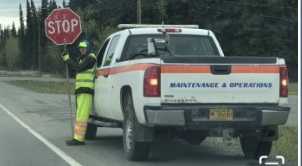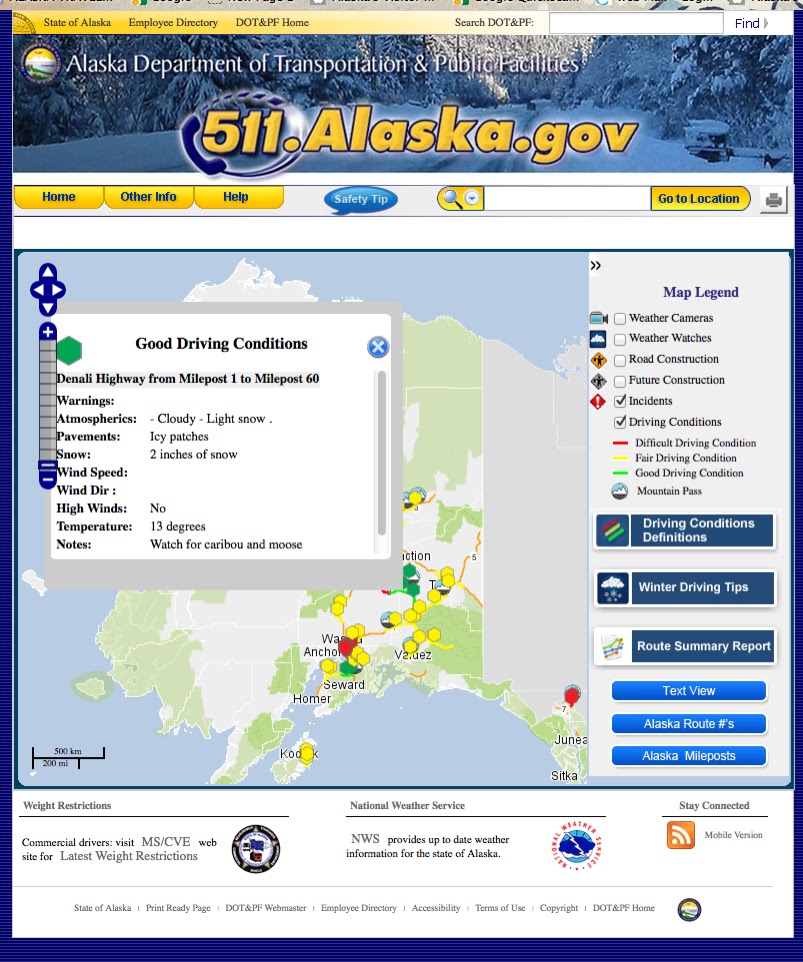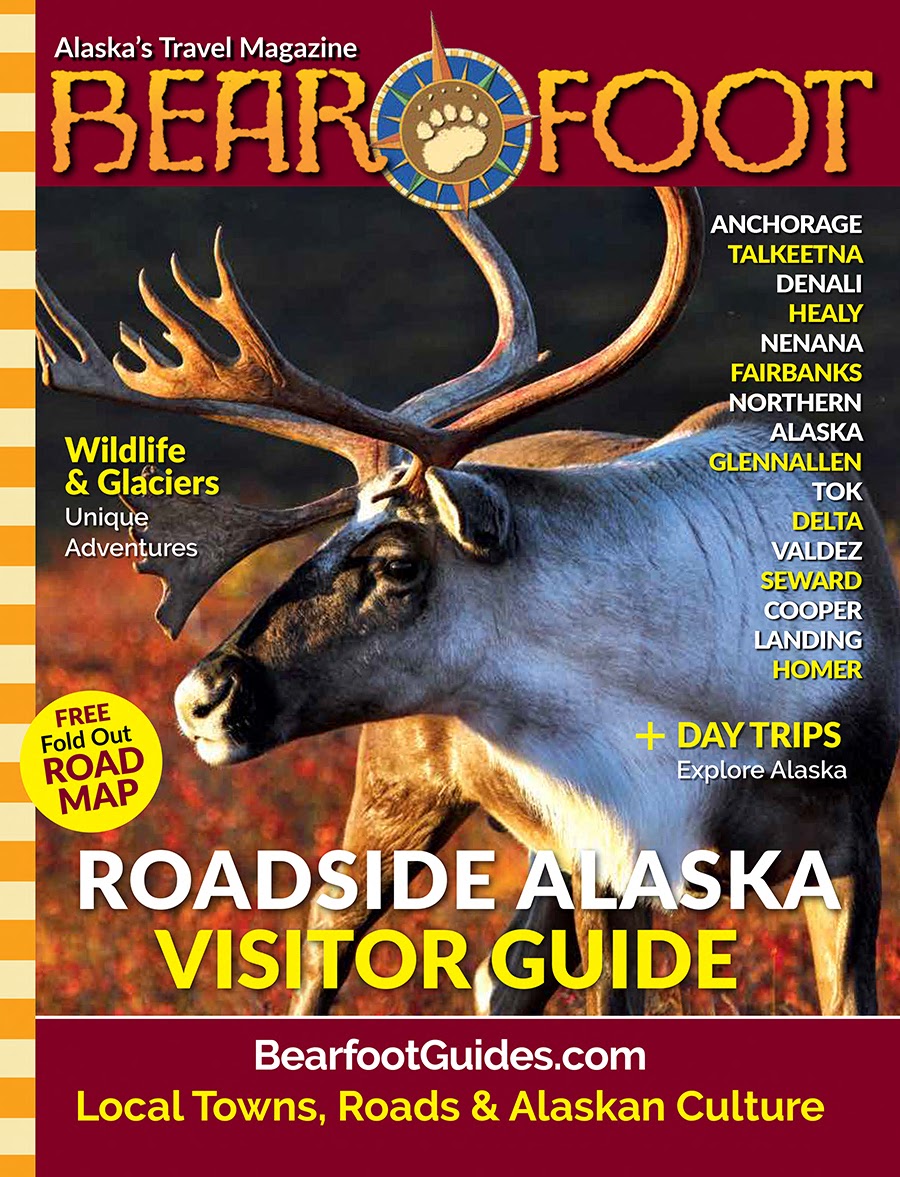Last Year, Yukon & Alaska Agreed To Fix A Section Of The Alcan, Proclaiming A "Shared Goal"
2024 Alaska-Yukon Road Partnership: A Distant Memory Of Hope & Cooperation ALCAN section in Canada (Photo, Yukon Territory) FOR IMME...
2024
Alaska-Yukon Road Partnership: A Distant Memory Of Hope & Cooperation
 |
| ALCAN section in Canada (Photo, Yukon Territory) |

Contact: Shannon McCarthy, 907-388-8087, shannon.mccarthy@alaska.gov
STATE OF ALASKA'S STATEMENT
Alaska and Yukon Collaborate to Improve the Alaska Highway
(ANCHORAGE, Alaska) – In a display of cross-border cooperation and shared commitment to regional connectivity, the Alaska Department of Transportation & Public Facilities (DOT&PF) announces a landmark collaboration with the Yukon Territory to improve the northern portion of the Alaska Highway. Bolstered by $31 million in funding from the Statewide Transportation Improvement Program (STIP), which was recently approved by the Federal Highway Administration (FHWA), this partnership underscores the joint efforts of Alaska and the Yukon Territory to enhance this vital highway connection.
The Alaska Highway serves as a lifeline for communities on both sides of the border, facilitating trade, tourism, and essential transportation.
“This is a significant milestone for Alaska as we advance our partnership with the Yukon," said Alaska Governor Mike Dunleavy. "This success in the STIP application underscores the importance of maintaining a safe and efficient passage for all visitors to the North, and we look forward to an exciting construction season ahead.”
Recognizing the shared significance of this iconic roadway, Alaska and Yukon signed an agreement on February 9, 2024. It outlines collaborative efforts to address key priorities along the Alaska Highway, including roadway maintenance, infrastructure upgrades, and emergency preparedness. Through shared resources and expertise, both jurisdictions will work to enhance traveler experience, promote economic development, and strengthen regional cooperation.
"The Alaska Highway is more than just a roadway; it's a lifeline for communities across the region," said Nils Clarke, Minister of Highway and Public Works for the Yukon Territory. "We applaud Alaska DOT&PF for their dedication to improving this critical transportation link and look forward to continued collaboration in enhancing connectivity and economic prosperity."
The northern section of the Alaska Highway, known as Shakwak, stretches from Destruction Bay to the Alaska/Canada Border, and is the only highway link between Alaska and the Lower 48. It is approximately 128 miles long. Please link here for the Yukon announcement of the agreement.
---------
YUKON TERRITORY'S STATEMENT
New funding for north Alaska highway upgrades to be provided over three years

The Government of Yukon is pleased to see the impact of the territory’s closer relationship with the Government of Alaska resulting in benefits for Yukoners and Alaskans. Following the Memorandum of Understanding signed in February by the Yukon’s Premier Ranj Pillai and Alaska Governor Mike Dunleavy, much-needed upgrades on the north Alaska Highway will begin in 2025 and continue until the end of the project in 2027.
Construction and upgrades will be funded by a $31.125 million USD (approximately $42.6 million CAD) investment by the Government of Alaska through the Statewide Transportation Improvement Program (STIP). This funding will help to ensure safe and efficient travel for Yukoners and Alaskans along this critical northern route.
The highway serves as the primary land link between southeast Alaska and the rest of the United States and connects many rural communities in the Yukon including Haines Junction, Destruction Bay, Burwash Landing and Beaver Creek. This roadway also links the traditional territories of the Champagne and Aishihik, Kluane and White River First Nations.
On February 9 of this year, the Yukon’s Premier Ranj Pillai and Alaska Governor Mike Dunleavy signed a Memorandum of Understanding. This agreement commits Alaska’s Department of Transportation and Public Facilities and the Government of Yukon’s Department of Highways and Public Works to work together to restore sections of the Alaska Highway in the Yukon.
The project will target a portion of the north Alaska highway, spanning approximately 222.5 kilometres from Destruction Bay to the Canada-US border. This section faces a range of road maintenance and safety challenges due to thawing permafrost. Restoration efforts will involve resurfacing and repairing the road underneath the surface and culverts. It will also include improvement to the drainage to make sure the road can be used safely at its intended speed.
The Government of Yukon is pleased to work with Alaska on shared priorities that improve the prosperity, stability and wellbeing of both Alaskans and Yukoners.
This partnership showcases the importance of working in collaboration towards a shared goal for northerners. The north Alaska highway is a vital component of our collective regional infrastructure. I know this funding commitment will ensure we can maintain the highway in optimal and safe condition for Yukoners, Alaskans and visitors. Maintaining this corridor bolsters security, facilitates trade, promotes tourism, and supports essential aspects of daily life in the North.
This is a significant milestone for Alaska as we advance our partnership with the Yukon. This success in the STIP application underscores the importance of maintaining a safe and efficient passage for all visitors to the North, and we look forward to an exciting construction season ahead.
I extend my gratitude to Alaska for its contribution to restoring part of the north Alaska highway with its Statewide Transportation Improvement Program. The funding allocated under this program will help mitigate the effects of thawing permafrost on this essential roadway. This contribution showcases both our governments’ recognition of the importance of this road link, as well as our commitment to keep the north Alaska highway safe for all road travellers.
In February 2024, the Yukon and Alaska submitted a joint application for U.S. government funding under the Rebuilding American Infrastructure with Sustainability and Equity (RAISE) discretionary grant program.
STIP is separate from RAISE funding and work can proceed without the latter.
The Infrastructure Investment and Jobs Act (also called the Bipartisan Infrastructure Law) has specific language that allows portions of the Alaska Highway in Canada to compete for and receive US federal grant funding for its reconstruction.













